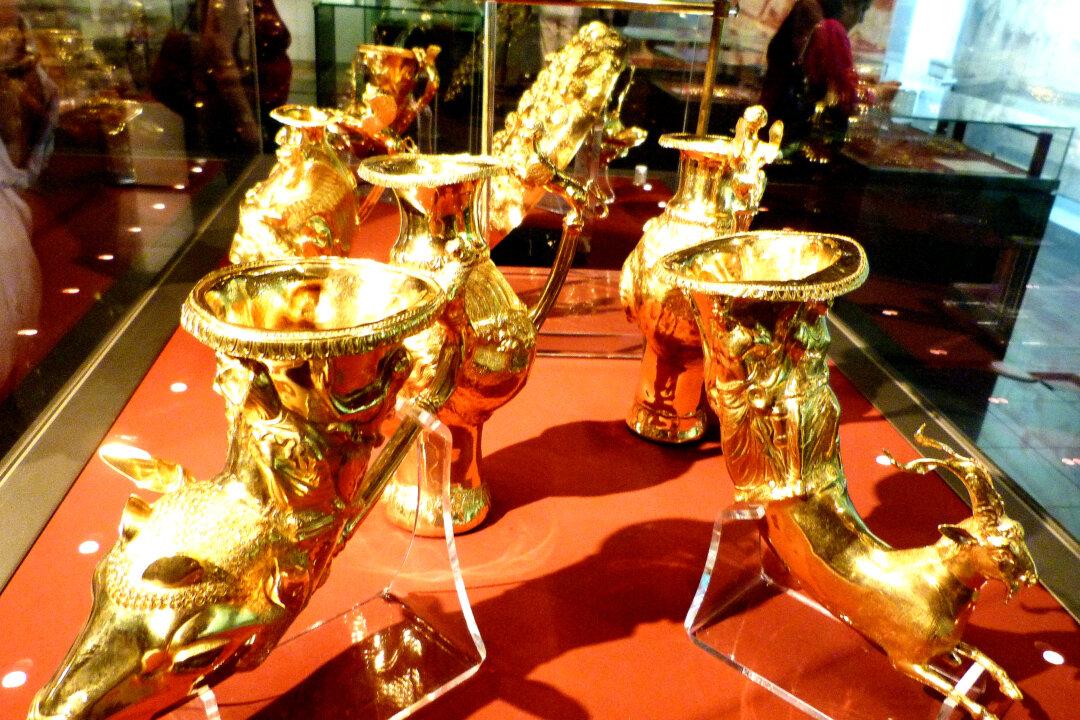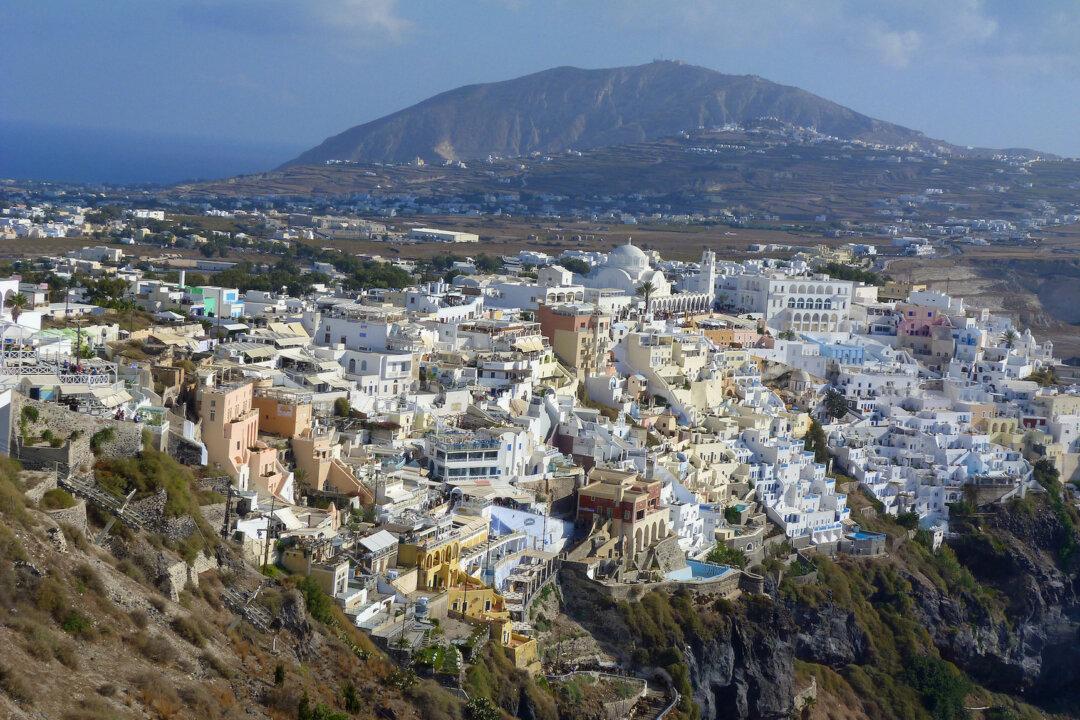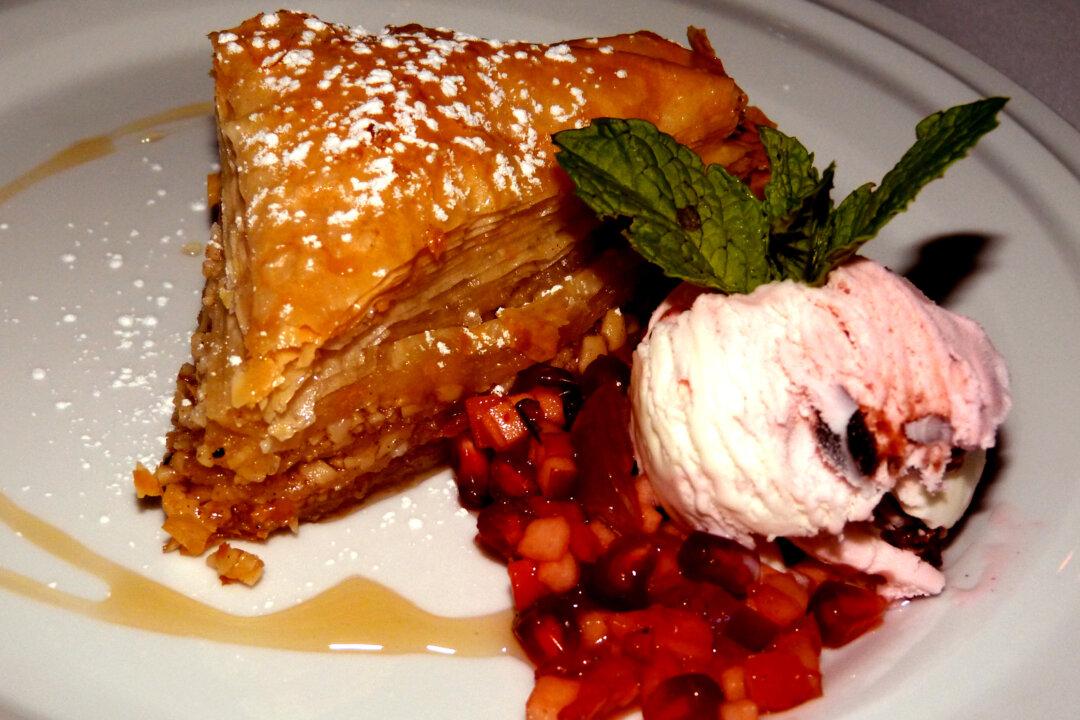In antiquity, the part of what is now Bulgaria, located between the Struma River and the Black Sea was occupied by the Thracian group of tribes.
Many ancient authors commented about the incredible drinking capabilities of the Thracians. Wine was the great passion of the Thracians, who were considered “big drinkers” of undiluted wines.
The Greeks in ancient times considered drinking undiluted wine crass; they diluted their wine with water and honey, resulting in a lower-alcohol beverage. Thrace was well-known as a wine-producing area, and Homer describes Thracian wine as a divine drink with a sweet and heavenly aroma.
Pliny the Younger mentions, “After drinking this wine the head hurts till the sixth hour [noon] on the next day.” Much of the Thracian Gold Treasures on display at the Sofia Archaeological Museum consist of solid-gold or gold-and-silver, highly detailed drinking and ceremonial vessels.
The Thracians considered wine drinking sacred, and its use was intended to assist in communion with the gods. The Greeks believed that Dionysus, the god of wine, was born in Thrace. The Dionysian cult was imported to Greece from Thrace or Phrygia at a late date, and Dionysus was never fully integrated into the Greek Olympian pantheon.
During our recent trip to Bulgaria we visited the Rhodope area, and were very lucky to taste some exceptional wines from three wineries of the Thracian lowlands.
Terra Tangra

Terra Tangra. (Manos Angelakis)
The first was Terra Tangra, a family run winery, with vineyards on the southwestern slopes of Sakar Mountain, along the Maritza River. The vineyards are organic/biodynamic and produce a line of exceptional wines. Each plot is harvested at full maturity, under optimal conditions. All grapes are handpicked and hand sorted at the vineyard.
We started dinner with a very nice rosé made from Mavrud, an indigenous varietal. In addition to the rosé, highlights of the product line were presented during dinner, including Terra Tangra 100 percent chardonnay, the blend Terra Tangra sauvignon blanc and semillon, and Yatrus 100 percent sauvignon blanc, plus their premium and super premium wines: Terra Tangra Grand Reserve 2009, 2009 Terra Tangra Roto, and Terra Tangra Single Barrel.
I will talk here about their premium and super premium wines, because I thought they were truly exceptional.
Single Barrel is a blend of cabernet sauvignon, cabernet franc, merlot, syrah, Rubin, and Mavrud, the last two local varietals. Aging takes place in specially selected barriques for 24 months. The wine has a very dark ruby color and tastes fresh, but with velvety fruit on the palate and has a lovely balance.
Grand Reserve 2009 is a blend of cabernet sauvignon, merlot, and cabernet franc. Dark garnet color with ruby highlights, fresh black forest fruit on the nose with mushrooms and hints of cloves and coffee. It is velvety on the palate with a memorable long and slightly spicy finish.
The piece de resistance was the 2009 Roto. It is an award winning wine in different European competitions and consists of a blend of five grape varieties, cabernet sauvignon, merlot, cabernet franc, syrah, and Mavrud. The reasons I liked this wine so much are the complex aromas— juicy black cherry and blackberry jam nose with hints of minerals, smoke, mushrooms, and tobacco; full body with concentrated flavors of ripe black forest fruit and velvety soft tannins; and a rich and elegant ending.
Angelus Estate

Angelus Estate and White Stallion. (Manos Angelakis)
The second winery that also produced excellent still wines was Angelus Estate, situated close to the Zhrebchevo (Stallion) Dam, on the hillsides of Sredna Gora. They own 106 hectares of vineyards planted with both red and white grapes. The varieties planted are all international grapes. (Red varieties: merlot, cabernet sauvignon, cabernet franc, syrah, and Petit Verdot. White varieties: chardonnay, sauvignon blanc, viognier, and traminer.)
Its wine line is called Stallion, utilizing the name of the dam where the winery is located as the signature name. It crafts White Stallion, a blend of chardonnay, viognier, and sauvignon blanc that is creamy with good acidity; Young Stallion, a blend of cabernet sauvignon, cabernet franc, syrah and merlot, a lively and spicy bottle; Stallion Classic, a blend of syrah, cabernet sauvignon, cabernet franc and merlot with a spicy, fruity aroma; Stallion, a blend of merlot, cabernet sauvignon, cabernet franc, and syrah; and Golden Stallion, a 2011 vintage blend of merlot, cabernet franc, cabernet sauvignon, and a touch of syrah. That particular bottle is now proudly aging in my cellar.
There is also a Rosé Stallion, a new (2012) beautiful light “salmon colored” blend of merlot and syrah. It has a subtle and complex aroma of tropical fruit and peach with a hint of almonds and white flowers. The body is light but structured with a spicy, dry finish.
We tasted the Rosé Stallion, White Stallion, Stallion Classic, and Stallion during our winery visit. The winery is a modern production facility utilizing both stainless steel temperature controlled fermenters, and also temperature controlled French oak fermenting barrels. Aging is in 225-liter French oak barriques, in temperature- and humidity-controlled cellars.
I hope some importer discovers these two wineries and starts bringing the wines to the United States. They are worth every euro spent in purchasing them; they can be served in competition with the best Italian, Spanish, or French producers.
Castra Rubra Cellar of Telish Winery

Castra Rubra. (Manos Angelakis)
Castra Rubra is a Latin name, which means Red Fortress, the name of an ancient Roman fortress. It is also the name of the new cellar belonging to the Bulgarian Telish Winery; the cellar’s 250 hectares of vineyards are planted with grape varieties very suitable for the terroir: cabernet sauvignon, merlot, Alicante Bouschet, sangiovese, pinot noir, cabernet franc, sauvignon gris, sauvignon blanc, grenache blanc, syrah, petit verdot, and the local varietals Rubin and Mavrud.
Additionally, Castra Rubra is the name of the premier wine produced at the cellar, a blend of merlot, cabernet sauvignon, and cabernet franc.
The 2009 bottle that we tasted had a beautiful very dark red color with medium garnet highlights; a nose of blackberries, plums, mocha, and vanilla, with hints of eucalyptus and leather; and a full body, fresh with velvety tannins and a considerably long spicy finish. If you like top Chilean wines from the Maipo, Castra Rubra is a very worthy substitute.
The team of young winemakers creating wines at Castra Rubra is headed by Michel Rolland, the renowned French consulting oenologist.
This wine is available in the United States on the West Coast, in China and Hong Kong, and of course, in Europe.
To your health!
Manos Angelakis is a well-known wine and food critic based in the New York City area. He has been certified as a Tuscan wine master, by the Tuscan Wine Masters Academy, as well as being an expert on Greek, Chilean, and Brazilian wines. He judges numerous wine competitions each year and is the senior Food & Wine writer for LuxuryWeb Magazine, www.luxuryweb.com, and The Oenophile Blog, www.oenophileblog.com.




